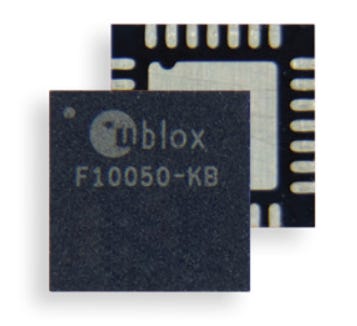Swift Navigation and Telit Cinterion have launched a joint product that integrates Swift’s Skylark Precise Positioning Service with Telit Cinterion’s GNSS modules. Use cases include wearables, robotic lawn mowers and vehicle tracking devices.
The partnership, with integration of Skylark into such Telit Cinterion modules as its SE868SY-D, will be targeted to customers developing next-generation of location-based apps for navigation, worker safety, fleet management and asset tracking, the companies say.
The companies say while precise positioning already enables devices to be located with centimeter accuracy, the challenge has been to integrate location technology into smaller battery-powered devices.
U-blox Launches Its First Dual-Band GNSS Platform Combining L1 and L5
In another product announcement this week, Thalwil, Switzerland-based u-blox [SIX:UBXN] rolled out the F10, which is company’s first dual-band GNSS platform combining L1 and L5 bands. The platform will be marketed to such urban mobility applications as aftermarket telematics and micromobility.
“GNSS receivers in urban environments suffer from reduced position accuracy because of satellite signals being reflected by buildings or other objects – multipath effect. The new F10 GNSS products use L1/L5 dual-band signals and mitigate the multipath effects,” said Bernd Heidtmann, u-blox Positioning Product Center product manager. “The result is a far better position accuracy in urban environments compared to GNSS L1 single-band products.”

Heidtmann said there are such design challenges as L1/L5 dual-band GNSS receivers require a dual-band antenna, which is larger than a L1 single-band antenna. “The RF circuit is more complex compared to the L1-only bill of material. With u-blox NEO-F10, MAX-F10 or MIA-F10 products this is not a challenge, as the relevant RF components are integrated into the module,” he said.
The company says that while applications that require accurate GNSS positioning are on the rise, many receivers don’t perform well in urban environments. Combined with the L1 band, an L1/L5 dual-band GNSS receiver can deliver less than 2-meter positioning accuracy—compared to about 4 meters with the L1 band only, the company said.




























